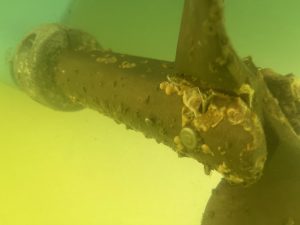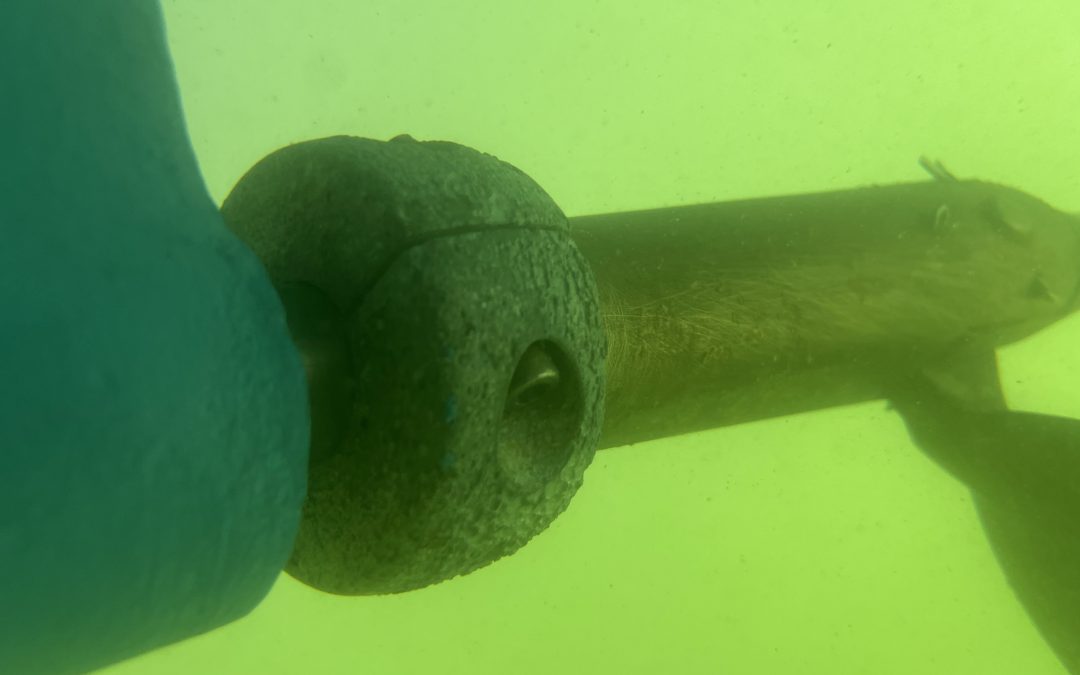Have you ever had an anode just not seem to be doing its job? You know, you install it on your propeller, everything looks good, and then a few months later you check the bottom of the boat and you see that the anode is just sitting there doing nothing. Meanwhile, your propeller is getting all corroded. What’s going on here?


“Zinc anodes are installed but the propeller corrodes anyways. First cleaning approx. two months after splashing at the boatyard, the zinc was still brand new and the propeller was severely corroded.”
Well, it’s possible that you’re falling victim to one of the most common mistakes when it comes to anode installation – not thoroughly cleaning the mating surface before installing the anode.
You see, anodes work by creating a galvanic cell between themselves and the metal they’re protecting. In order for this to work effectively, it’s important that the anode and the mating surface are clean and free of contaminants.
If the mating surface is dirty or contaminated, it can disrupt the galvanic cell and prevent the anode from doing its job. For example, if you don’t clean the mating surface thoroughly before installing the anode, it’s possible that dirt, grime, or other contaminants could interfere with the anode’s ability to protect the propeller.
Similarly, if you drop the anode in a bucket of diesel or other contaminants before installing it, it’s likely that the anode will be rendered ineffective. Diesel and other hydrocarbons can coat the surface of the anode and disrupt the galvanic cell, preventing the anode from doing its job.
So, what’s the solution to this problem? The key is to thoroughly clean the mating surface and the anode itself before installing it. This can involve sanding the inside face of the anode to remove any contaminants that may have stuck to it, as well as cleaning the mating surface with a solvent or other cleaning agent to remove any dirt or grime.
By taking the time to properly clean and prepare the anode and mating surface, you can ensure that the anode is able to do its job effectively and protect your propeller from corrosion. So, don’t skimp on the prep work – a little extra effort can go a long way when it comes to maintaining your boat and keeping it in top condition.
I hope this article has been helpful and has highlighted the importance of thoroughly cleaning the installation area before installing an anode. Remember, a clean mating surface and anode are essential for effective protection against corrosion. Take the time to do it right, and you’ll be glad you did!
Keywords: anode installation, galvanic cell, mating surface, anode maintenance, anode cleaning, propeller corrosion, zinc anode, aluminum anode, magnesium anode ,anode protection, anode effectiveness , anode installation tips, cleaning mating surface, de-oxidizing surface, torque anode, seat anode, anode material selection, hydrocarbons, anode installation process, anode installation prep work
Related Articles

Red Tide/Algae Bloom
During August & September 2022, San...

Anode Issues
Anode Fasteners Falling Out Anodes lose material...

How to properly install anodes
If you are tired of replacing your anodes every...
Ask Lowell
LH Marine serves all marinas and homes in the SF Bay Area.
Phone: (510) 470 – 9220
